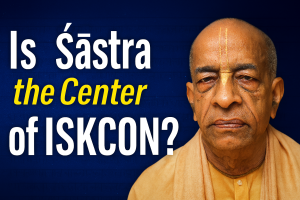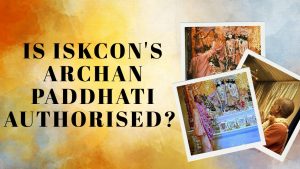Can śūdras become dīkṣā-gurus in ISKCON?
Śrī Caitanya Mahāprabhu’s well-known statement — “Whether one is a brāhmaṇa, a sannyāsī or a śūdra, he can become a spiritual master if he knows the science of Kṛṣṇa” (Śrī Caitanya-caritāmṛta, Madhya-līlā, 8.128) — is often cited as a rejection of social status in spiritual life. Many think it means neither birth nor social status matters; only realization of kṛṣṇa-tattva matters. Yet ISKCON’s Governing Body Commission (GBC) as per a resolution in 2014 requires candidates for dīkṣā-guru to be “twice-initiated for at least ten years.” This raises a doubt: does ISKCON’s law contradict Mahāprabhu’s teaching?


